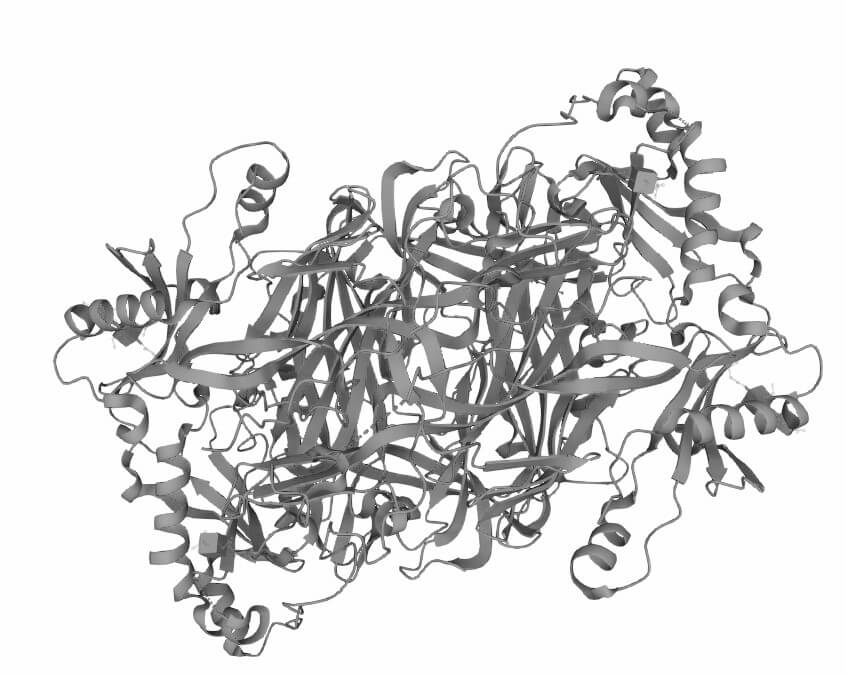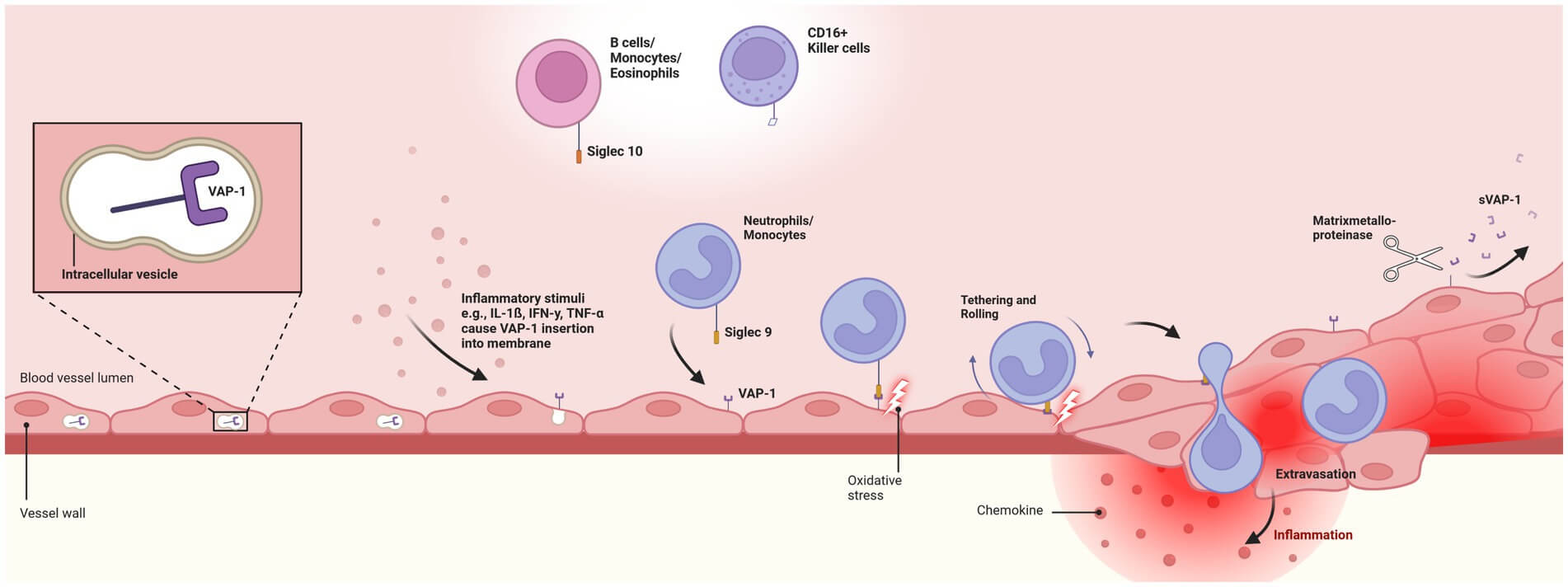Vapaliximab Overview
Introduction of Vapaliximab
Vapaliximab (HUVAP, or BTT-1002) is a humanized chimeric IgG2 monoclonal antibody that targets vascular adhesion protein-1 (VAP-1, also known as amine oxidase copper-containing 3, AOC3), a protein involved in the adhesion and migration of immune cells. Developed to address chronic inflammatory conditions (including rheumatoid arthritis), Vapaliximab is designed to disrupt the inflammatory response by interfering with the trafficking of immune cells. VAP-1 is involved in the adhesion of leukocytes to endothelial cells, a crucial step in the migration of immune cells to inflammation-prone sites. Once Vapaliximab targets VAP-1, it inhibits this interaction, decreasing inflammation and slowing disease progression in the long term. Vapaliximab is not only available for the treatment of rheumatoid arthritis; researchers have looked into its use in conditions including inflammatory bowel disease and psoriasis. Although early clinical trials suggested some issues with the antibody's pharmacokinetics, its potential to control the immune system remains intriguing. Further research is being conducted to assess the safety, efficacy, and long-term benefits of Vapaliximab, particularly when used in combination with other treatments.
Biological and Chemical Properties of AOC3
Protein Structure
 Figure 1. The Structure of Human AOC3. (UniProt)1,2
Figure 1. The Structure of Human AOC3. (UniProt)1,2
The Mechanism of Vapaliximab Action
What is VAP-1?
VAP-1 (Vascular Adhesion Protein-1), also referred to as AOC3, is a glycoprotein on the cell surface that is at the core of how the immune system reacts to inflammation. It is expressed most prominently on endothelial cells, particularly the high endothelial venules (HEVs) of lymphoid tissues, where it controls the flow of immune cells. VAP-1 works by allowing leukocytes to stick to vessel walls, and so leave the bloodstream and travel to sites of infection or injury. This process is vital for the immune system, so white blood cells can attack and combat infection or inflammation. Beyond adhesion, VAP-1 is also an amine oxidase, which enables amines to be broken down to generate metabolites that lure immune cells further into the inflammation site.
VAP-1 overexpression is associated with multiple chronic inflammatory conditions, including rheumatoid arthritis, inflammatory bowel disease, and multiple sclerosis. It also helps to spread tumor cells and contributes to angiogenesis (the growth of new blood vessels). Thus, targeting VAP-1 could both dampen the excessive inflammatory processes and perhaps prevent the proliferation of tumors, making it a target of choice for therapeutic interventions in many diseases.
How Does Vapaliximab Work?
Vapaliximab works by directly blocking the activity of VAP-1, preventing it from acting as a mediator of immune cell adhesion to endothelial cells. This inhibition stops leukocytes from moving from the circulation to the inflammation location and thus inhibits the inflammatory process. When Vapaliximab binds to VAP-1, it blocks its association with leukocyte integrins, which are typically responsible for enabling immune cells to adhere to the walls of blood vessels. This disruption keeps immune cells from overaccumulating in inflamed tissue, decreasing tissue damage and inflammation. Moreover, by blocking VAP-1's amine oxidase activity, Vapaliximab avoids the production of metabolites that might otherwise attract additional immune cells, further slowing the inflammatory process. Vapaliximab's ability to inhibit VAP-1 could have applications beyond inflammatory disorders. Since VAP-1 contributes to tumor growth and metastasis, blocking this protein may slow the growth of cancer cells and the generation of new blood vessels needed for tumor development. Thus, Vapaliximab can be used not only for autoimmune disorders but also for oncology.
 Figure 2. Pathophysiological Role of Vapaliximab Target VAP-1.3
Figure 2. Pathophysiological Role of Vapaliximab Target VAP-1.3
What We Provide
Anti-Human AOC3 Recombinant Antibody (Vapaliximab)
We provide high-quality Vapaliximab for use in WB, FC, IP, ELISA, Neut, FuncS, IF and most other immunological methods. The product is for lab research use only, not for diagnostic, therapeutic, or any in vivo human use.
- Immunogen
- Purified vessels from human peripheral lymph nodes.
- Host Species
- Mouse
- Derivation
- Chimeric (mouse/human)
- Type
- IgG2
- Specificity
- Tested positive against native human antigen.
- Species Reactivity
- Human
- Applications
- Suitable for use in WB, FC, IP, ELISA, Neut, FuncS, IF and most other immunological methods.
- CAS
- 336801-86-6
- Generic Name
- Vapaliximab
- Related Disease
- Unknown
- UniProt Database (https://www.uniprot.org/uniprotkb/Q16853/entry)
- The image was retrieved from UniProt Database and used under [CC BY 4.0] without modification.
- Petzinna, Simon M., Claus-Jürgen Bauer, and Valentin S. Schäfer. "Vascular-adhesion protein 1 in giant cell arteritis and polymyalgia rheumatica." Frontiers in Medicine 11 (2024): 1448157. Distributed under Open Access license CC BY 4.0, without modification.
For research use only. Not intended for any clinical use.
This site is protected by reCAPTCHA and the Google Privacy Policy and Terms of Service apply.

